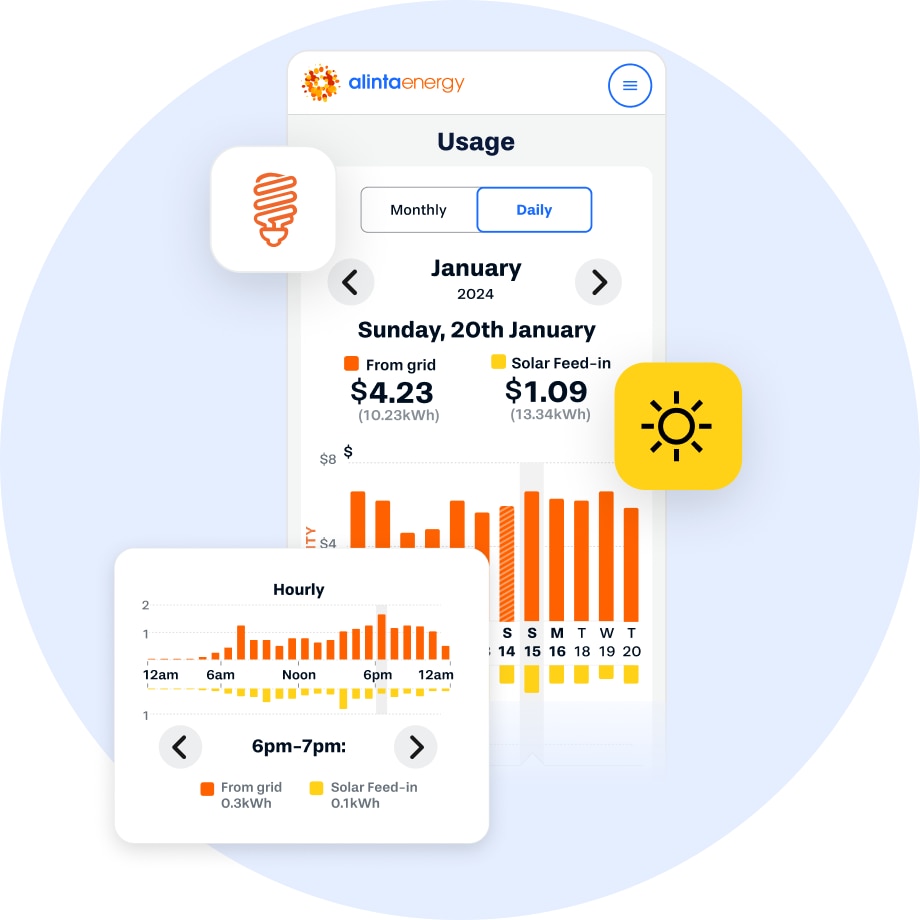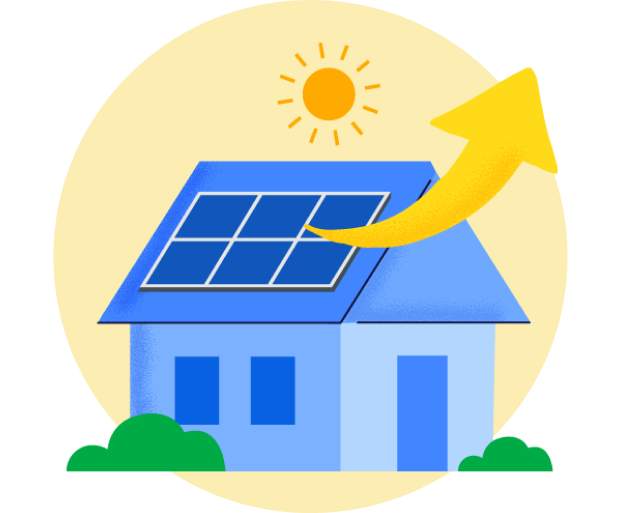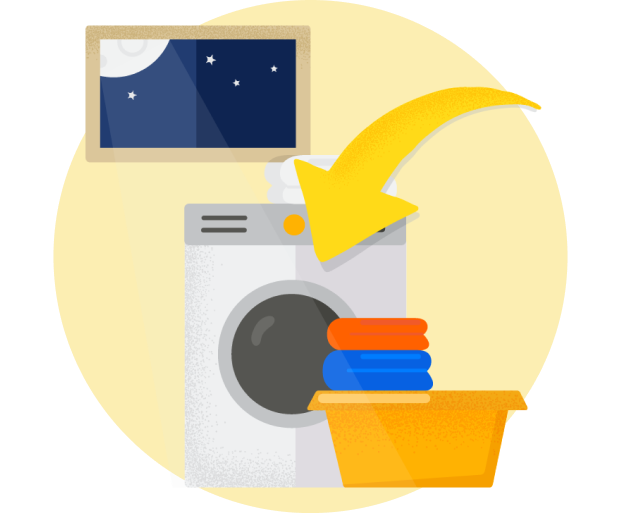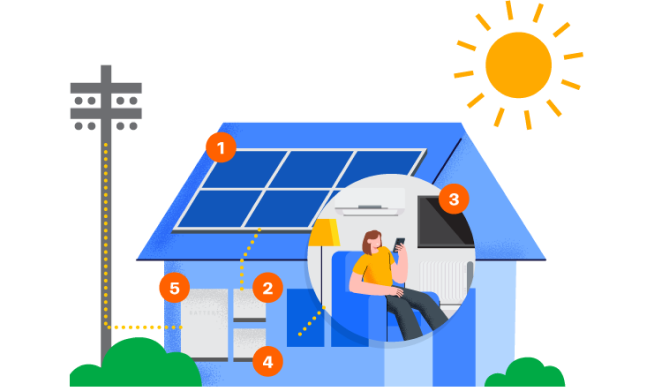It's easy to see how much solar energy you're exporting and how much electricity you're using from the grid with MyAccount or the Alinta Energy app. Here's how:
- Log in to MyAccount or the Alinta Energy app
- Go to the 'Usage' tab at the top
- Choose to view your usage by day or month





